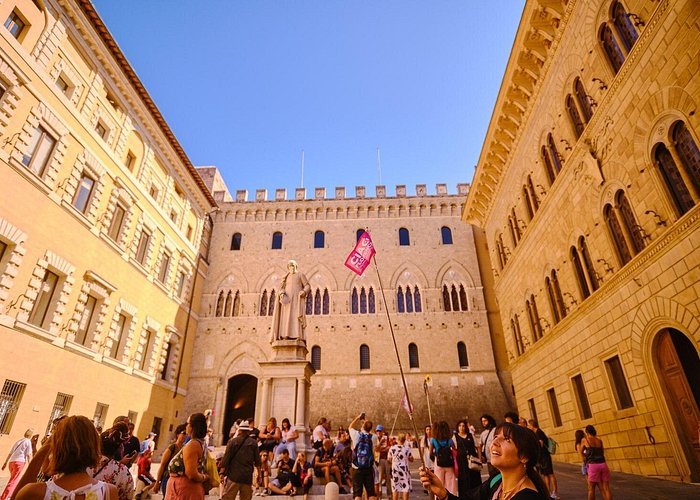
Medieval Gems of Tuscany: Siena, San Gimignano & Monteriggioni
Introduction
Tuscany is renowned for its rolling vineyards, Renaissance art, and charming hilltop towns. But beyond Florence and Pisa lies a trio of medieval marvels—Siena, San Gimignano, and Monteriggioni—that transport visitors back to the Middle Ages. These UNESCO-listed towns boast ancient towers, Gothic cathedrals, and perfectly preserved fortifications, offering a glimpse into Italy’s storied past.

This 3,500-word guide explores the history, attractions, and hidden treasures of these medieval gems, along with practical travel tips for an unforgettable Tuscan journey.
Why Visit Siena, San Gimignano & Monteriggioni?
These three towns are among the best-preserved medieval settlements in Italy, each offering a unique experience:
- Siena – A Gothic masterpiece with a legendary Palio horse race
- San Gimignano – The “Medieval Manhattan” with its iconic towers
- Monteriggioni – A tiny, walled fortress straight out of a fairy tale
Traveling between them feels like stepping into a medieval painting, with cobbled streets, artisan workshops, and panoramic Tuscan views.
1. Siena: The Gothic Jewel of Tuscany
History & Significance
Founded by the Etruscans and later flourishing under medieval rule, Siena was once a rival to Florence in power and artistry. Its golden age in the 13th-14th centuries left behind stunning Gothic architecture.
Top Attractions in Siena
Piazza del Campo (UNESCO Site)
- The heart of Siena, famous for its shell-shaped design
- Home to the Palio, a historic horse race held twice yearly (July & August)
Siena Cathedral (Duomo di Siena)
- A Gothic masterpiece with black-and-white marble stripes
- Features works by Michelangelo, Donatello, and Bernini
- Don’t miss the Piccolomini Library’s frescoes
Palazzo Pubblico & Torre del Mangia
- Climb the 400-step tower for panoramic city views
- Houses frescoes of “Good and Bad Government” by Ambrogio Lorenzetti
Hidden Gems in Siena
- Santa Maria della Scala – A medieval hospital turned museum
- Fontebranda – Ancient public fountain from the 13th century
Best Time to Visit Siena
- Spring (April-June) – Mild weather, fewer crowds
- Palio Season (July & August) – Thrilling but busy
- Autumn (September-October) – Wine harvest festivals
2. San Gimignano: The Town of Towers
History & Significance
Once a wealthy trading hub, San Gimignano was known for its 72 medieval towers (only 14 remain today). These towers symbolized family power and prestige in the Middle Ages.
Top Attractions in San Gimignano
Piazza della Cisterna
- A triangular square with a 13th-century well
- Lined with gelato shops and artisan stores
San Gimignano Cathedral (Collegiata)
- Features frescoes depicting biblical scenes
- The Chapel of Santa Fina has stunning Renaissance art
Torre Grossa (The Great Tower)
- The tallest remaining tower (54 meters)
- Climb to the top for breathtaking Tuscan views
Vernaccia Wine Tasting
- San Gimignano is famous for Vernaccia di San Gimignano (white wine)
- Visit local enotecas for tastings
Best Time to Visit San Gimignano
- Early morning or late afternoon – Avoid day-tour crowds
- September – Wine harvest & fewer tourists
3. Monteriggioni: The Perfect Medieval Fortress
History & Significance
Built in the 13th century by the Sienese to defend against Florence, Monteriggioni is a tiny, circular walled village with 14 intact towers. It inspired Dante’s “Inferno” as a ring of giants.
Top Attractions in Monteriggioni
The Medieval Walls
- Walk the entire perimeter for stunning countryside views
- Visit the Armor Museum to see medieval weapons
Piazza Roma
- The only square in town, surrounded by cafes and shops
- Home to the Church of Santa Maria Assunta
Monteriggioni in Festa (July)
- A medieval festival with costumes, archery, and feasts
Best Time to Visit Monteriggioni
- Spring or Autumn – Ideal for walking the walls
- July – If you want to experience the festival
How to Visit All Three Towns in One Trip
Option 1: Guided Tour from Florence
- Pros: Hassle-free, expert guides, includes transport
- Cons: Less flexibility
Option 2: Self-Drive Road Trip
- Pros: Freedom to explore at your own pace
- Cons: Parking can be tricky in medieval towns
Option 3: Public Transport (Train & Bus)
- Florence → Siena (1.5h by bus)
- Siena → San Gimignano (1h by bus)
- San Gimignano → Monteriggioni (30 min by taxi/bus)
Where to Stay: Best Accommodations
Luxury Stays
- Siena: Palazzo Ravizza (Historic hotel with gardens)
- San Gimignano: Hotel L’Antico Pozzo (Boutique medieval residence)
Mid-Range Options
- Monteriggioni: B&B Monteriggioni (Cozy rooms inside the walls)
Budget-Friendly
- Agriturismos (Farm stays with local charm)
Dining in Medieval Tuscany: Must-Try Foods
Siena
- Pici pasta (Hand-rolled thick spaghetti)
- Panforte (Traditional fruitcake)
San Gimignano
- Wild boar stew (Cinghiale)
- Gelato from Gelateria Dondoli (World champion gelato)
Monteriggioni
- Ribollita (Tuscan bread soup)
Conclusion
Exploring the medieval gems of Tuscany—Siena, San Gimignano, and Monteriggioni—is like traveling back in time. From Siena’s Gothic grandeur to San Gimignano’s iconic towers and Monteriggioni’s fairy-tale walls, each town offers a unique slice of history.
Ready to plan your trip? Whether you choose a guided tour, self-drive adventure, or public transport, these Tuscan treasures promise an unforgettable journey.
FAQ Section
Q: Can I visit all three towns in one day?
A: Yes, but it’s rushed. Ideally, spend 1 day in Siena, half-day in San Gimignano, and 2 hours in Monteriggioni.
Q: Is a car necessary?
A: Not essential, but it offers more flexibility. Buses connect all three towns.
Q: Are these towns crowded?
A: San Gimignano gets busy midday; visit early or late. Monteriggioni is quieter.
Q: What’s the best season to visit?
A: Spring (April-June) and Autumn (September-October) offer pleasant weather and fewer crowds.
